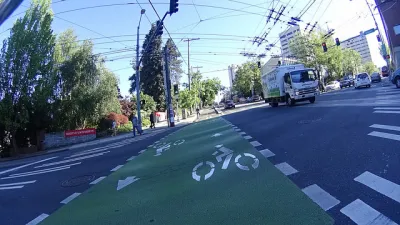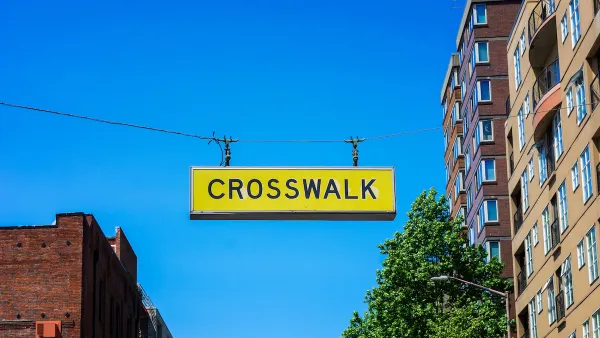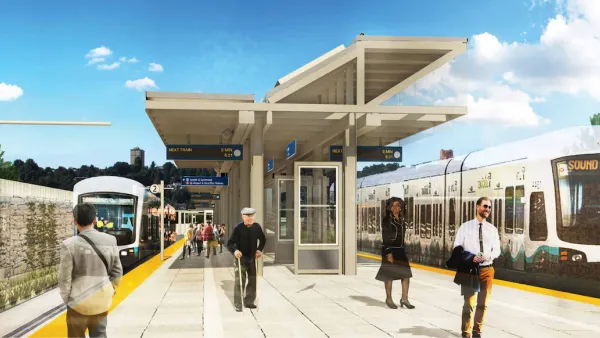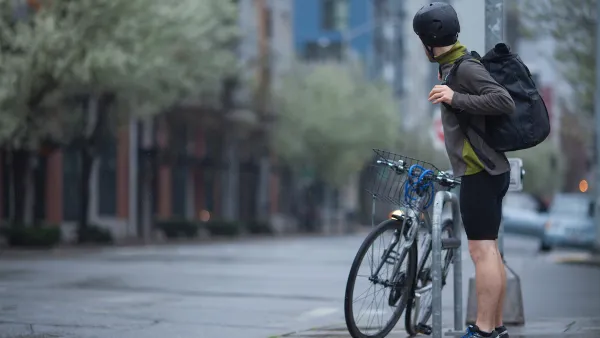Minneapolis and Seattle bucked national trends by increasing active transportation and use of public transit in recent years.

As cities across the U.S. struggle to sustain transit ridership, Minneapolis and Seattle have distinguished themselves with high rates of non-car commuting, according to a recent report from the Institute for Transportation and Development Policy.
Streetsblog's Angie Schmitt reports that despite gaining 30,000 residents between 2007 and 2016, Minneapolis reduced vehicle miles traveled by 2 percent over that time. In Seattle, average daily traffic fell 5 percent between 2006 and 2017.
"Believe it or not, this is a rare feat," Schmitt writes, noting that low gas prices, population growth, and the rise of ride-hailing services have made reducing driving "one of the hardest codes [to crack] in city planning."
The strategies that led to these results won't be surprising to many transportation planners. They fell along three major lines:
- Investment in public transit, both bus and rail. Both Seattle and Minneapolis are in the midst of building or expanding their BRT networks, and both have opened new rail lines in recent years. Seattle voters in particular have shown willingness to fund transportation.
- Investment in bike infrastructure. Both cities are "famously bike friendly," with Seattle being named Bicycling Magazine's Top Biking City in America in 2018.
- Urban infill and dense, walkable development. Seattle recently launched a program to build affordable apartments on public land adjacent to light rail, while Minneapolis saw nearly $1 billion in downtown development in 2017 and eliminated parking requirements in 2018.
FULL STORY: How Two Cities Actually Reduced Driving

National Parks Layoffs Will Cause Communities to Lose Billions
Thousands of essential park workers were laid off this week, just before the busy spring break season.

Retro-silient?: America’s First “Eco-burb,” The Woodlands Turns 50
A master-planned community north of Houston offers lessons on green infrastructure and resilient design, but falls short of its founder’s lofty affordability and walkability goals.

Delivering for America Plan Will Downgrade Mail Service in at Least 49.5 Percent of Zip Codes
Republican and Democrat lawmakers criticize the plan for its disproportionate negative impact on rural communities.

Test News Post 1
This is a summary

Test News Headline 46
Test for the image on the front page.

Balancing Bombs and Butterflies: How the National Guard Protects a Rare Species
The National Guard at Fort Indiantown Gap uses GIS technology and land management strategies to balance military training with conservation efforts, ensuring the survival of the rare eastern regal fritillary butterfly.
Urban Design for Planners 1: Software Tools
This six-course series explores essential urban design concepts using open source software and equips planners with the tools they need to participate fully in the urban design process.
Planning for Universal Design
Learn the tools for implementing Universal Design in planning regulations.
EMC Planning Group, Inc.
Planetizen
Planetizen
Mpact (formerly Rail~Volution)
Great Falls Development Authority, Inc.
HUDs Office of Policy Development and Research
NYU Wagner Graduate School of Public Service





























